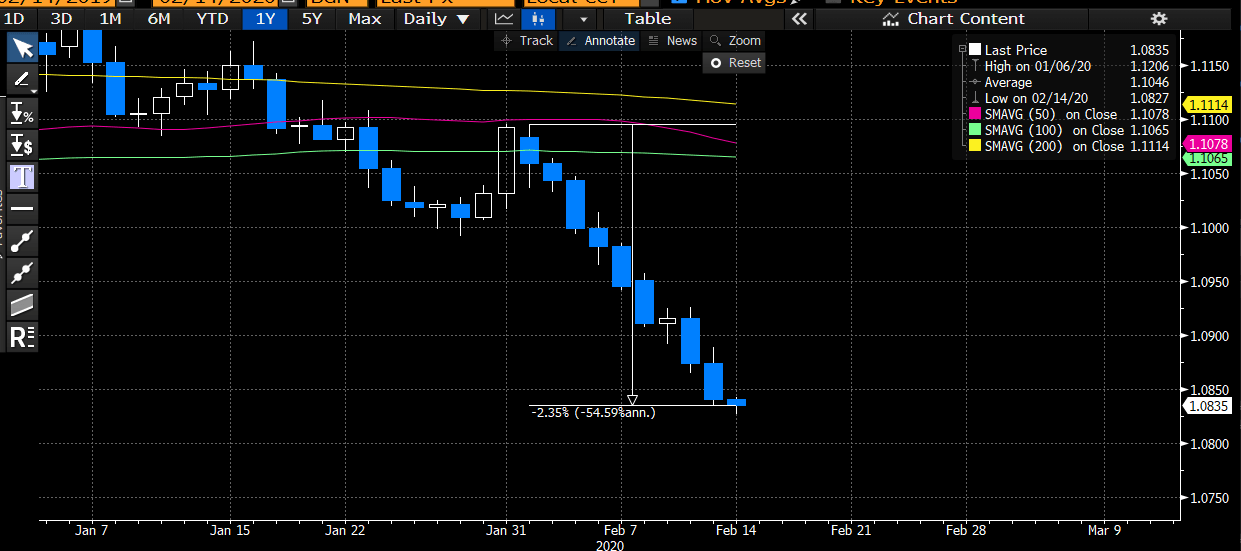When you look at the Euro Dollar chart, it does make you wonder what is behind the move? Is the Euro going to fall apart? Is the Euro-parity finally on the cards again?
All those questions are valid, and as an investor or a trader, one should ask those questions, because the Euro-dollar has been in such a long trend since the start of this year.
At the beginning of this month, the EUR/USD was trading at 1.1084, and so far, it has dropped 2.35% approx. The last trading price was 1.0835.
Speculators have drawn too much blood out of this trade, and the currency pair has touched the lowest point since April 2017. Let’s dwell further on the reasons behind the current move, and see if it makes sense, after all, the move has been mammoth.
Here are the key reasons why the move has been so intense:
The European Central Bank’s new president, Christine Laggard, has defended the case for lower interest rates and, she has left the door wide open for more stimulus if there is any need for such. As long as the ECB is willing to push the interest rate curve lower, traders are ready to beat the EZ’s currency more against the dollar, because the Federal Reserve hasn’t shown any reason why they should cut the interest rates. Let’s just say that Trump’s prayers have not produced any fruit. This makes the Euro even more vulnerable for it is trading against a currency that is supported by a hawkish monetary policy stance.
If we start focusing on the Eurozone’s economic data, it has taken a turn for the worse. The economic engine of the Eurozone, Germany, isn’t providing any support. This has tumbled the Eurozone’s industrial production number.
Another important reason for the sell-off in the EUR/USD pair is that the dollar is also considered as a safe haven currency, and the on-going virus outbreak has increased its attraction. On the other hand, the lower interest rate on the Euro makes it more attractive as a funding currency. Hence, the selling pressure on the Euro is twofold.
In terms of the economic calendar, we have the German Prelim GDP q/q reading due at 07:00 GMT and, it is expected to stay at 0.1%. If we see the German GDP number showing any weakness — a highly likely scenario — because of the Coronavirus’s influence, it could push the Euro even lower against the dollar today. The dwindling German economy means the shrinking Eurozone’s economy.
The information is purely for education purposes only and cannot be perceived as an advise.
Recommended Content
Editors’ Picks
AUD/USD could extend the recovery to 0.6500 and above

The enhanced risk appetite and the weakening of the Greenback enabled AUD/USD to build on the promising start to the week and trade closer to the key barrier at 0.6500 the figure ahead of key inflation figures in Australia.
EUR/USD now refocuses on the 200-day SMA

EUR/USD extended its positive momentum and rose above the 1.0700 yardstick, driven by the intense PMI-led retracement in the US Dollar as well as a prevailing risk-friendly environment in the FX universe.
Gold struggles around $2,325 despite broad US Dollar’s weakness

Gold reversed its direction and rose to the $2,320 area, erasing a large portion of its daily losses in the process. The benchmark 10-year US Treasury bond yield stays in the red below 4.6% following the weak US PMI data and supports XAU/USD.
Bitcoin price makes run for previous cycle highs as Morgan Stanley pushes BTC ETF exposure

Bitcoin (BTC) price strength continues to grow, three days after the fourth halving. Optimism continues to abound in the market as Bitcoiners envision a reclamation of previous cycle highs.
US versus the Eurozone: Inflation divergence causes monetary desynchronization

Historically there is a very close correlation between changes in US Treasury yields and German Bund yields. This is relevant at the current juncture, considering that the recent hawkish twist in the tone of the Federal Reserve might continue to push US long-term interest rates higher and put upward pressure on bond yields in the Eurozone.
